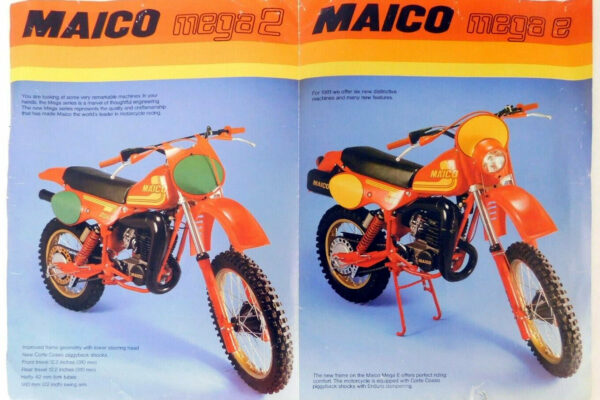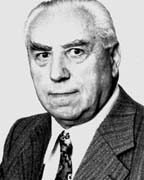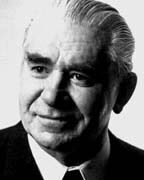The Ascent and Subsequent Fall from Grace of Maico:
Egotism, Greed, and the Most Iconic Motorcycle Brand.
Throughout Human History, the twin demons of egotism and greed have been constant companions, driving individuals and societies to the brink of conflict. These vices have fueled wars, toppled civilizations, torn families apart, and, in some instances, even halted the march of greatness. Such is the dark tale of Maico, a motorcycle brand that emerged from the ashes of post-war Germany only to be consumed by internal strife, engineering disasters, and the insatiable hunger for power and wealth.
- Otto Maisch
- Wilhelm Maisch
The Birth of Maico
Maico’s story begins in 1946, in a war-ravaged Germany, where Otto and Wilhelm Mish, two German brothers, found themselves in a warehouse south of Stuttgart, contemplating their future. The country lay in ruins, its economy shattered, and millions were left homeless. It was a bleak landscape, but the Mish brothers knew they had to rebuild their lives.
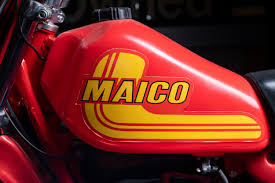
Before the war, they had worked in their father Ulrich’s automobile business, known as Maishen Company. This company provided automobile services round the clock, along with selling bicycle and motorcycle parts. In 1935, the Mish brothers even built their first complete motorcycle, a humble machine with a small engine. After the war, as they assessed the dire transportation needs of their ravaged nation, they decided to refocus their efforts on developing and producing motorcycles.
The brothers shortened the company name to Maico and in 1949, they introduced the Maico M150, a durable and affordable motorcycle that met the needs of a country in recovery. As the 1950s rolled in, the European economy started to recover, and Maico thrived. They expanded their product line with the M175 and M250 motorcycles, introduced the Maico Mobile scooter, and even ventured into car production, using Heinkel engines that bore a striking resemblance to the Volkswagen Beetle.
However, their turning point came when they were commissioned to produce 10,000 dual-sport motorcycles for the German Army. This shift towards off-road and competition motorcycles would eventually define Maico’s legacy.
The Dark Shadows of Success
While Maico’s star was on the rise, dark clouds loomed behind the scenes. The exact origins of the internal conflict that would later cripple the company remain shrouded in mystery. Some speculate that political differences, with Wilhelm’s past involvement in the National Socialist Party, and Otto’s lack of affiliation, played a role. Otto’s majority ownership of 60% of Maico due to Wilhelm’s party involvement added to the tension.
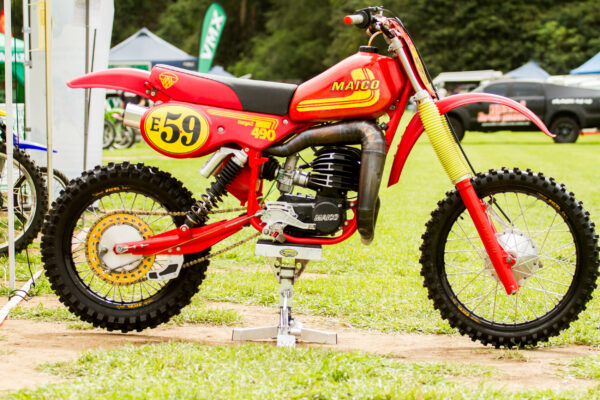
The feud escalated in 1957 when Wilhelm was struck by a motorcycle and left paralyzed. After this accident, Wilhelm became a mere figurehead in the company, leaving Otto in control. Wilhelm attempted to involve his three sons, Hans, Peter, and Wilhelm Jr., in the business, not only to secure his family’s interests but also to act as his eyes and ears within the company. This move, while perhaps well-intentioned, only added to the complexity of the brewing family conflict.
Despite this internal strife, Maico managed to set aside their differences during the 1960s and continued to flourish. They found themselves at the forefront of off-road motorcycle technology, thanks to their mastery of chassis and geometry design. This expertise gave them a significant advantage over their competitors and contributed to their dominance in off-road racing.
The Culmination of Greatness: The 1981 Maico 490 Mega 2
In 1981, Maico achieved a pinnacle of greatness with the introduction of the 1981 Maico 490 Mega 2. This legendary dirt bike is often hailed as one of the greatest off-road motorcycles ever built. What set it apart was its exceptional power, handling, and engineering. Sporting a 490cc two-stroke engine that produced over 45 horsepower and weighing around 240 pounds, the bike was a beast by 1980 standards.
The power delivery was described as a “rush of acceleration,” and the handling was razor-sharp. Magazine testers marveled at its crisp and clean power, and they couldn’t find any faults in its design. In fact, Maico was so confident in the quality of their bikes that they allowed magazines to break them down to verify their stock components.
The Maico 490’s design and geometry would continue to influence dirt bike engineering for years to come. It became a benchmark for measuring other late-model dirt bikes, a testament to its enduring greatness.
The Rapid Decline and Sabotage
However, Maico’s meteoric rise would soon give way to a disastrous fall. In 1982, when the highly anticipated 1982 Maico 490 was released, it proved to be a shocking disappointment. Rear hub failures, gearbox explosions, and a sudden weight gain of over 20 pounds plagued the bike. The decision to use Corte and Koso shocks, unproven in the motorcycle industry, backfired due to improper lengths and alignment issues.
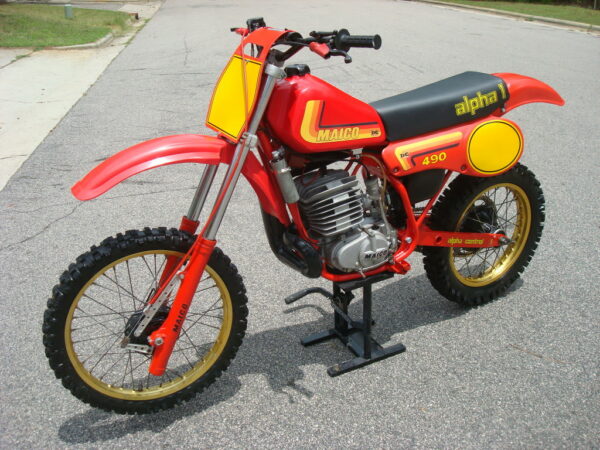
1982 Maico 490 alpha 01
The 1983 model, expected to redeem the brand, suffered similar issues. Rear hub failures and gearbox problems persisted, leading to lawsuits and injuries. The term “Mako Braco” was coined to describe these troublesome motorcycles. David Dion Scott, an American racer, was paralyzed due to a rear hub failure, which resulted in a lawsuit that further tarnished Maico’s reputation.
The company’s reputation was in tatters, and their sales plummeted. Despite Otto’s efforts to borrow money and provide warranties for the damaged bikes, the banks were unwilling to support him. He poured his life savings into saving the company, but it was too late. Maico filed for bankruptcy in 1983, and the Mish family lost control of the business.
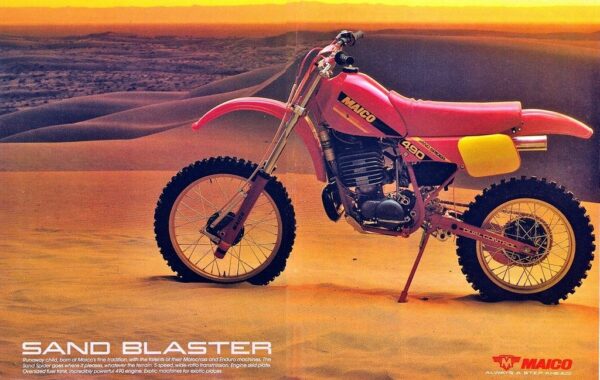
1983 Maico 490
Legacy and Lessons Learned
Maico’s story is a cautionary tale of how success, when marred by internal strife, greed, and engineering blunders, can lead to a rapid downfall. Despite its unfortunate end, the brand’s legacy lives on in the hearts of motorcycle enthusiasts who fondly remember the Maico 490 Mega 2 as a true masterpiece of its time. The rise and fall of Maico serves as a reminder that even the most iconic brands can crumble when ego and greed take center stage. It also underscores the importance of ethical business practices, quality control, and innovation in maintaining success. Corporations may do best to take note of this fact, and have more ethics, than ego and greed.
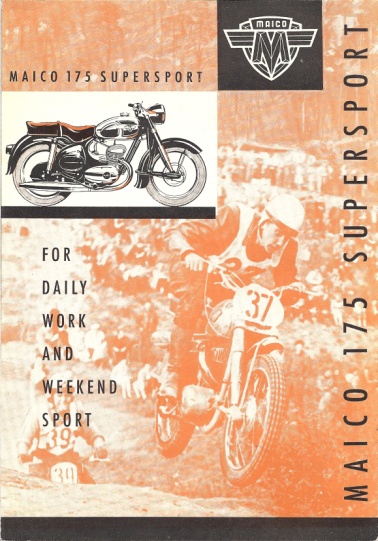
1956 Maico brochure
